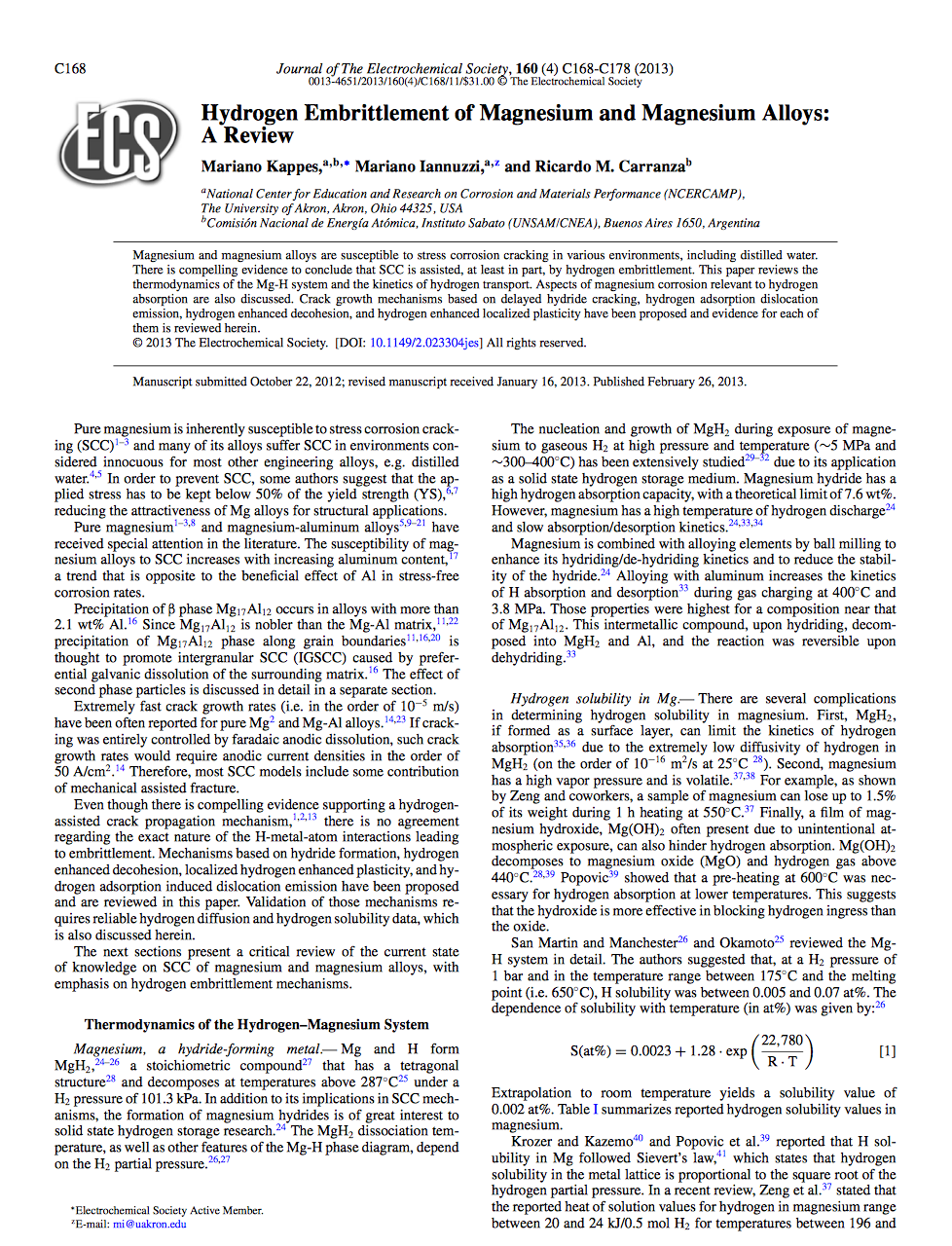A few years ago together with my colleagues and good friends Dr. Mariano A. Kappes and Prof. Ricardo M. Carranza, we adventured into the realm of hydrogen embrittlement of magnesium alloys. We will explore magnesium alloys at length in future posts, but suffice is to say that they are a fascinating system. Although magnesium alloys combine good strength and low weight, they are intrinsically susceptible to corrosion and environmentally assisted cracking. Indeed, some Mg alloys suffer stress corrosion cracking even in deionized water!
In this article, we present and debate the various hydrogen embrittlement and stress corrosion cracking mechanisms. Because unlike iron-based alloys (e.g., low alloy steels) magnesium reacts with hydrogen to form hydrides, we emphasize the importance of understanding the thermodynamics of the Mg-H system.
We hope you enjoy reading the manuscript. You can get your copy by clicking on the figure below.
Abstract
Magnesium and magnesium alloys are susceptible to stress corrosion cracking in various environments, including distilled water. There is compelling evidence to conclude that SCC is assisted, at least in part, by hydrogen embrittlement. This paper reviews the thermodynamics of the Mg-H system and the kinetics of hydrogen transport. Aspects of magnesium corrosion relevant to hydrogen absorption are also discussed. Crack growth mechanisms based on delayed hydride cracking, hydrogen adsorption dislocation emission, hydrogen enhanced decohesion, and hydrogen enhanced localized plasticity have been proposed and evidence for each of them is reviewed herein.
Citation
Kappes, M., Iannuzzi, M. & Carranza, R. M. “Hydrogen Embrittlement of Magnesium and Magnesium Alloys: A Review.” J. Electrochem. Soc. 160, C168-C178, doi:10.1149/2.023304jes (2013).
[altmetric doi=”10.1149/2.023304jes” type=”donut” condensed=”true” data-hide-no-mentions=”false” popover=”right” details=”right”]
